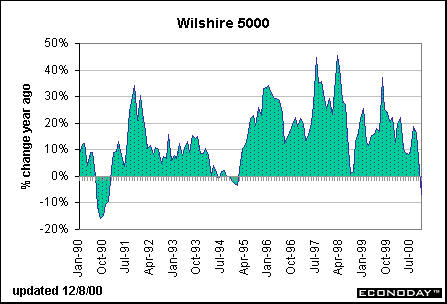At his Humphrey-Hawkins testimony on February 17, Greenspan noted that stock prices would have to rise at about the same pace as income in order for consumers to moderate their spending behavior. That means stock prices would have to rise about 6 percent a year rather than the long-term average of nearly 11 percent a year. Well, we are a far cry from that point since stock prices declined in November from year ago levels. The wealth effect may be going into reverse.
Long Term Perspective
Pool of Available Labor • Nonfarm Productivity • Treasury Yields • Stock Prices • Humphrey-Hawkins Actions |
|||

